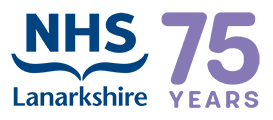With bonfire night approaching NHS Lanarkshire are promoting a series of messages to ensure everyone stays safe around fireworks.
Dr John Keaney, divisional medical director for acute services for NHS Lanarkshire, said: “Fireworks, sparklers and bonfires are fun but we want you to play safe to avoid injury.
“If someone receives a minor burn, it may be best to treat it at home by keeping the burn clean and don’t bust any blisters that form”
If you have a burn that you think needs looked at by a professional, you can get advice from a local pharmacist or GP instead of visiting A&E, where there may be a long wait to be seen.
John added:” You should go to A& E for burns that are seep and Large – bigger than your hand, burns that cause white or charred skin and burns that cause blisters on the, face, hands, arms feet, legs or others areas.
“People at greater risk from the effects of burns, such as children under five years old and pregnant women, should also get medical attention after a burn or scald so that the size and depth of injury can be assessed and the affected area be cleaned before a dressing is applied.”
NHS Lanarkshire is also advising to treat burns and scalds following the advice below.
• immediately get the person away from the heat source to stop the burning;
• cool the burn with cool or lukewarm running water for 20 minutes – don’t use ice, iced water or any creams or greasy substances such as butter;
• remove any clothing or jewellery that’s near the burnt area of skin, including babies’ nappies – but don’t move anything that’s stuck to the skin;
• make sure the person keeps warm – by using a blanket, for example, but take care not to rub it against the burnt area;
• cover the burn by placing a layer of cling film over it – a clean plastic bag could also be used for burns on your hand;
• use painkillers such as paracetamol or ibuprofen to treat any pain;
• if the face or eyes are burnt, sit up as much as possible, rather than lying down – this helps to reduce swelling.
Guidance is also available through NHS inform or you can call NHS 24 on 111 if you need advice out of hours.
Bonfire Night is traditionally one of the busiest nights of the year for Scotland’s emergency services The Scottish Fire and Rescue Service are also highlighting the importance of staying safe this Autumn.
The Scottish Fire and Rescue Service responded to more than 160 deliberate fires and bonfires in North and South Lanarkshire areas in the four weeks leading up to the Bonfire Night period in 2018.
This resulted in more than 180 fire appliance mobilisations.
Alan Fairbairn Area Commander for the Scottish Fire and Rescue Service’s local senior officer for South Lanarkshire said: “We take great pride in working at the very heart of our communities, alongside our partners, to help keep people safe. However, every year across the country people are injured by fireworks or other heat sources such as sparklers over the Bonfire Night period.
“We make every effort to reach out to young people wherever possible to equip them with the tools and the knowledge to stay safe and provide them with a real insight into the potentially devastating consequences of fire and the misuse of fireworks.
“Our advice is simple – leave the explosives to the professionals and attend an organised Bonfire Night display.
“If you still intend to hold a display on your own property, then we implore people to follow the fireworks code, and avoid giving open flames or handheld sparklers to children.”



